“Faster, angrier, louder.”
Coming quickly on the heels of All The Way Down, one of our favourite records of last year, Dead When I Found Her’s fourth LP, Eyes On Backwards was released last week. We spoke with Michael Arthur Holloway about the record’s harsh contrast to its predecessor, and were lucky enough to get Michael’s insights on each of the record’s songs.
ID:UD: There was a very quick turnaround between All The Way Down and Eyes On Backwards and a sharp stylistic turn as well. What motivated you to get another record out so quickly, and one with such a different mood?
MAH: A lot of factors fueled the quick turnaround time for Eyes on Backwards. I’ve always felt that the wait between album two (Rag Doll Blues) and album three (All The Way Down) was far too long – with the way I work and how productive I tend to be, three years was an unnecessarily long wait, and it only happened that way because of various unrelated life distractions and other projects that took up a ton of time. But strictly in terms of my level of motivation in writing industrial music and the technical processes involved, ATWD essentially took nine months to create. After that experience, I thought “hey, nine solid months of writing and production is basically what I need to make an album, so if I prioritize my time accordingly, I could actually do this again and have a new album in a year.” Once that was clear, I decided I wanted to go for it—also because, after the success of ATWD, I was just feeling it, you know? The industrial music was boiling in my blood and I just wanted to keep going with it. So Eyes On Backwards was born. I knew from day one, track one, that it was going to be a shift from the last album: the idea was to make something different but complementary to ATWD, generally speaking – faster, angrier, louder. That’s how it started, anyway.
ID:UD: Speaking to the difference in sound between this album and your previous releases, was there any change in your writing or production process? Did you approach this record differently from a creative standpoint?
MAH: The basic setup was the same as ever – me in front of my iMac running Ableton Live and using a massive collection of plugin instruments and effects, playing everything on a Novation controller keyboard. But with every project, I’m trying out new synths, experimenting with new effects, building massive rabbit-hole deep racks inside Ableton…and so on. So there’s always a lot of new things going on in my working process, but the fundamental broader approach hasn’t changed at all, if that makes sense. With this album, for one example, there was way more overdrive and saturation applied to the vocals than before; whereas with All The Way Down and vocals, the focus was on heavy pitch-shifting effects.
ID:UD: There’s a strong thematic aspect to each DWIFH release, informing it lyrically and sonically. Do you find that you discover those themes as the album is being written, or is it more of a conscious inspiration as you begin making the record?
MAH: I usually have a thematic concept before the album is started, or during the creation of the first few songs. It really helps me plot a map of where I’m going, and informs the decisions I make regarding choice of sounds, lyrics, song titles, etc. With EOB I wanted the theme to be looser than it was with ATWD, simply because that album was so, so specific in its approach, essentially it was a concept album. On EOB it’s looser, but present, and the theme is my (or your, or anybody’s) relationship with nostalgia, and how that can feel both euphoric and crushing in equal parts. It also occurs to me that with every theme on every album so far, they all click into an overarching theme: coming to terms with the passage of time.
ID:UD: Eyes On Backwards has a lot of what might be called the ‘classic’ DWIFH sound. Four albums in, what’s your position on what the project can (or should) sound like? Have you given much thought to what ideas or sounds do and don’t belong in DWIFH?
MAH: It was a very deliberate choice right when I started this album that I wanted it to feel old school and classic, both for Dead When I Found Her as a project, but also in terms of the (so to speak) ‘electro industrial’ sound. I think that after the heavy, drawn-out approach to All The Way Down, I was feeling, artistically speaking, eager to get back to more immediate and direct songwriting. I always have a general sense of ‘what kind’ of album I want each release to be, and for this one, it was pure old school, at least insofar as I define it. It feels like I pushed myself into a distant territory with ATWD, then snapped right back into familiar but much-loved territory for EOB. But, being four albums into this thing, whatever comes next will have to be something very, very fresh, and my mind is already churning away at what that could be…
“Tantrum”
This was essentially the mission statement for the new project: angry, loud, immediate. My plan at first was to make an entire album of blistering industrial music that sounded very ‘classic’ in style. ”
“Tantrum” came out of that plan, and was the most pure and direct distillation of that goal. So naturally it had to be the leadoff track. I remember recording the vocals – that scream at the end in particular – shortly after moving into a new house in a new neighborhood here in Portland, and realizing later that a lot of our windows were open at the time I was recording. It’s quite possible our neighbors think some very bad shit is going down in this house; I still haven’t mentioned to them that I have, you know, an ‘industrial band.’
“The Big Reverse”
This song was started and scrapped about three times before it finally clicked into place with this final version. It was always all about the syncopated beats and how they all grinded together, and it took a lot of finessing to get it right. I think it has some of my favorite vocals on the album – stuff where I just loosened up and cranked the overdrive and launched into full old-school freaky mode. As with “Tantrum”, the idea here was still on making immediate, propulsive music.
“Shining Path”
This one was still very much in the grinding, dark, classic mode of industrial, but just slowed down a bit. I wrote the bassline with the FM8 synth and once it clicked in, I knew it was a keeper. The bassline is the spine of the whole track for me; it might be subtle, but that sequence provides, to my mind anyway, the core musical motif of the whole piece. Obviously albums like Too Dark Park were a big influence on this sort of style.
“Braille”
This is one of my favorites, easily, and it was also the last track written for the album. Whereas most of these songs were written in the fall of 2015, right around the time All The Way Down was released, “Braille” was written in early 2016. Like with many of the songs here, the focus was on rhythm – and not just drums, but in creating catchy, staccato synth-lines. You’ll hear similar things back in “Tantrum”, and it’s one of my favorite parts of industrial music in general – these twisting, twittering synth sequences that worm around through different notes and propel the track forward. Essentially they are arpeggios, but I always play them by hand, so as to allow more variation in the patterns. I’m not fond of static repetition with synth elements; I like to hear change, however subtle, and I like it when the looping-point isn’t immediately clear.
“High Anxiety”
Here’s the pop song for the album—call it this album’s “Rain Machine” or “Downpour”. The intention I stated earlier about writing an “all aggro” album, well that started breaking down, inevitably. It’s simply in my nature to write melodic music, and all my favorite industrial music – from Skinny Puppy to Project Pitchfork to Mentallo & The fixer – is rooted in a core of genuinely classical, musical song-craft. I always come back to that, and I’m fine with that, because I think if I hadn’t started writing melodic passages, EOB wouldn’t have sounded like a true Dead When I Found Her album. On this song, it’s the most overt of anywhere on the album: verse-chorus structure, simple melody in the chorus, breakdown, repeat. It’s a bit of formula, sure, but it all clicked into place, and my rule is always this: formula is OK if the whole becomes more than the sum of its parts. Whether that happens or not is really more a matter of instinct, I suppose. This song struck that nice combo of melancholy and catchy which has been a fundamental part of DWIFH all along, so I stuck with it.
“Unsolved History”
This one is a journey into classic mid-tempo melodic industrial music. The title itself takes me back to themes that were explored throughout the first album, Harm’s Way. It also has the two-part structure that has showed up in a lot my songs—like “Dry Bed”, “Curtains”, and also “Serus Mundi” at the end of this album. I started working with some very retro sounds here—mellotron choirs, synth leads that are, dare I say, synthwave-y. Jeremy at ArtOfFact says it has a John Carpenter vibe for him, and while I hadn’t thought of it at the time, I can totally see that now. Perhaps it’s the literally nostalgic track on the album, where the sounds themselves reach further back to old analog synth albums and soundtracks.
“Midlife Eclipse”
I have this obsession with propulsive acoustic drum playing; it can take a lot of forms, and recalls playing like the amazing drum-work on “Look Back In Anger’ by Bowie. You play a syncopated pattern with acoustic drums (or in my case, samples of acoustic drums!), run it through a lot of dotted-eighths delay, and let it just carry the whole song forward. I did this on the last album with the track “Seeing Red,” and that’s how this song started as well, though it went through various edits before reaching its final form. The synth parts were done almost entirely with Absynth, one of my absolute favorite instruments for years now. The result is, for me, one of the more unique sounding songs on the album – weird spacey synth textures and hits over the propulsive drumming, and a return to the aggro-side of vocals heard earlier on the album. I wanted to pick up the energy level of the album here again before dropping into the more drawn-out, atmospheric conclusion.
“The Pines”
Every album needs that sample-heavy dose of instrumental atmosphere, and here it is. I love songs like this, because they let me focus on the details of sampling, and placing those sounds in specific locales, working toward vibe over everything else. It’s a very Doubting Thomas sort of approach, to state the possibly obvious.
“Serus Mundi”
The themes up to this point of the album were entirely about this internal struggle with Nostalgia—but here’s where the rest of the world comes crashing down on me. Writing this song, I had just read Derrick Jennsen’s book Endgame, which is a 400+ page argument that our civilization is inherently unsustainable and both 1) Doomed for an inevitable collapse and 2) Built from slavery and suffering anyway, so maybe that’s OK. This song came out of my reflection on these supposed facts (and he makes a VERY strong case), and so it had to be the closing track – it’s the breaking out point, where my so-to-speak narrator / consciousness finally peeks his head out beyond his internal world of solipsistic self-absorption and realizes, holy shit, there’s a world beyond my mind and it’s bigger and uglier than anything I have going on inside me. All the obsessive quests to define the self through the past (the titular Eyes on Backwards) just freeze, get turned around, and see the confrontation occurring nationally, globally, universally. The final part has the lyrics “You will be Ignored…by every Angel, by every God…Ignored.” Well, I probably don’t need to point out the obvious existential conflict going on here. It’s a very nihilistic song, and essentially says that beyond whatever meaning you find in your internal search, the universe is, of course, wholly indifferent. I’ve had this feeling for a long time that ‘epiphanies’ about life and its meaning are basically bullshit, they’re little more than an endorphin rush to the brain to make us feel important for a little while. Well, this song is what happens when the balloon gets popped, so to speak.
Eyes on Backwards is available digitally, and on CD and vinyl from Artoffact Records.

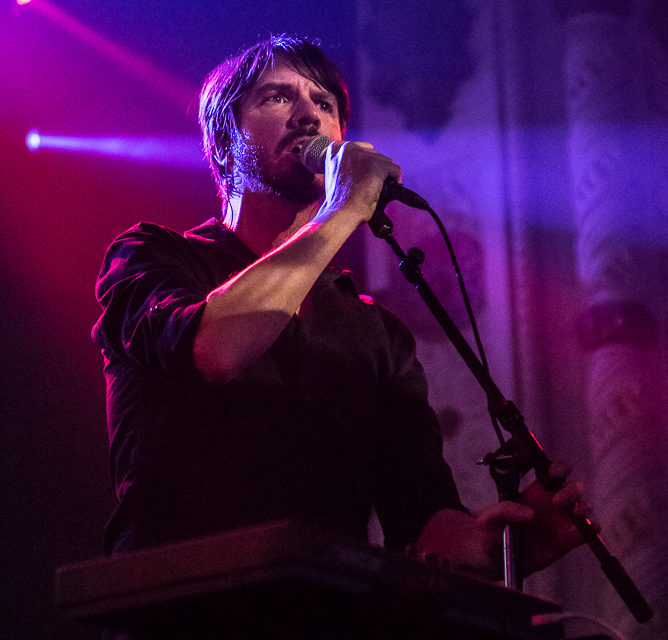
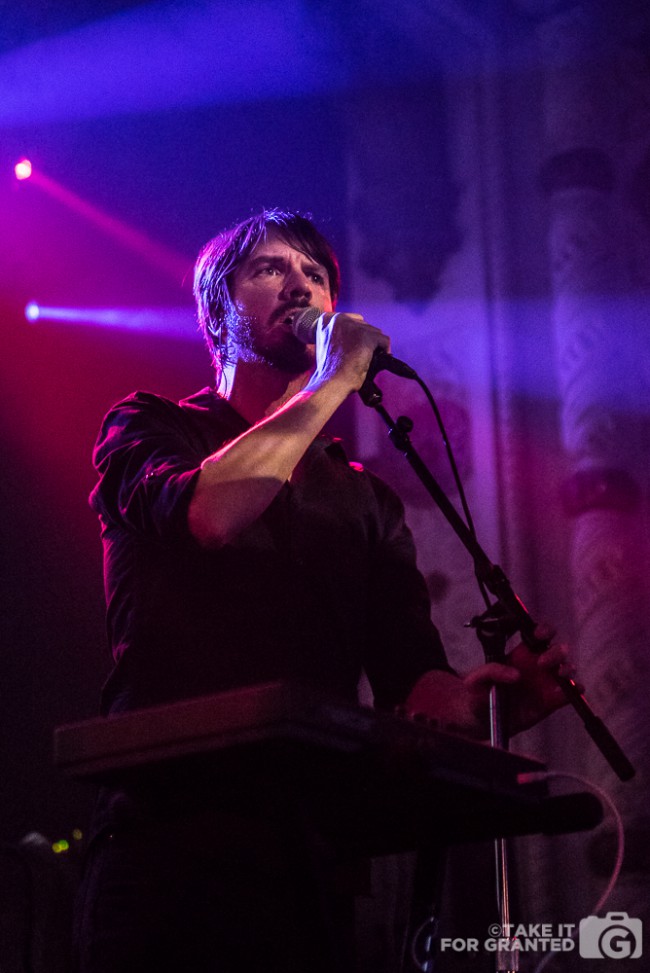
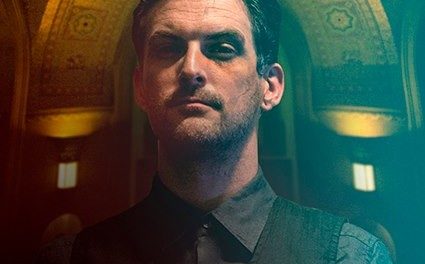
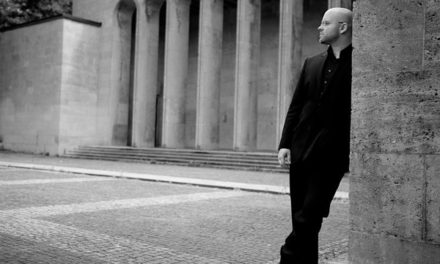
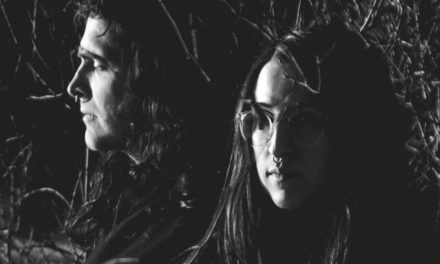
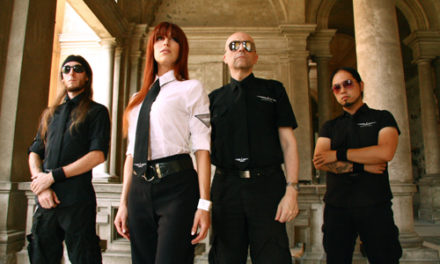
Thanks for this break-down ID:UD & DWIFH!
Loving the new album!